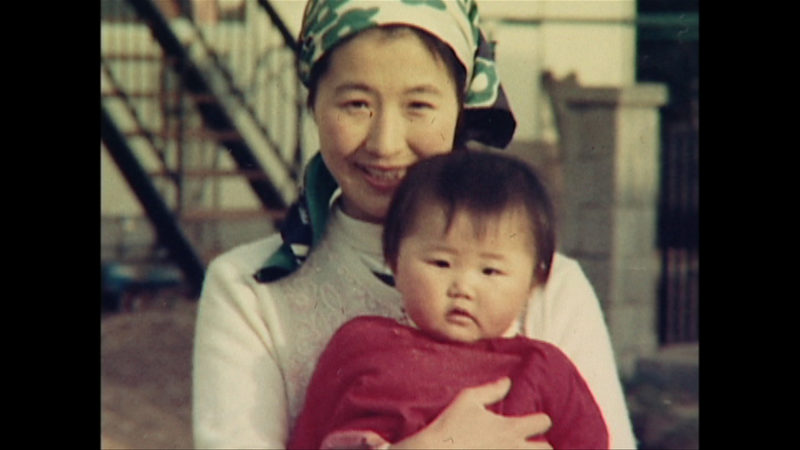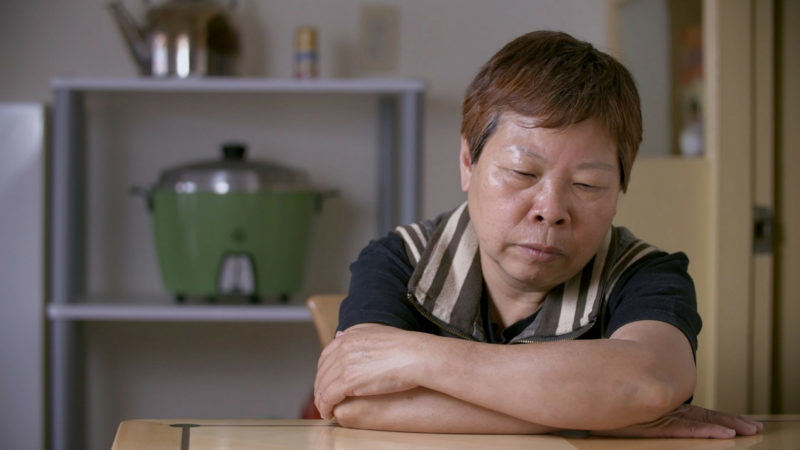TIDF takes place every other year in early May and its venues are in the heart of Taipei abutting Linsen Bei Lu, the city’s red light district. There, in between friendly locals and night markets, KTV parlors and massage girls are losing a turf war to condo developments and hipster bars, erasing what remains of the Japanese occupation of Taiwan during World War II. I couldn’t help but read these changes as a metaphor for the contested history of Taiwan as well as the difficulty of carving out space for the unsavory—the visual evidence of power disputes weighed on my mind during TIDF. The festival’s programming so clearly reflected an urge to advance both a contemporary and historical South China Sea cinema of resistance.
Home, Sweet Home Unusually, almost half of the 170 films programmed at TIDF were in retrospectives; collectively, they reflected the importance the festival placed on excavating the past. The most significant of these was a program on the video art of Hong Kong and Taiwan in the 1980s and ’90s. Co-curated by Lin and film scholar Sing Song-yong, it attempted to navigate the question of whether it is possible for a nation to have a distinctive filmmaking voice, and whether it is useful to group filmmakers by geopolitical borders. All of the videos in this sidebar were transparently anti-government ripostes, with political connections explicitly and perhaps simplistically drawn to the present day. For example, Cheang Shu-lea—who has a significant body of work interrogating race, queerness, and gender politics—was represented in the program only with “Making News/Making History” (1990), a four-channel installation that mixed her footage of Tiananmen Square protests with Chinese and international media coverage. The effect was to subsume Cheang’s work into the exhibit as a blob of anti-PRC sentiment, and I couldn’t shake the feeling that the approach betrayed a lack of trust in an audience to appreciate a film if it isn’t topical. Granted, disseminating this video is still dangerous: a filmmaker I met at TIDF posted it on Wechat, China’s main messaging app, and was banned from the online service for a week. One of the revelations of the Hong Kong and Taiwan video art program, however, was pioneering Hong Kong experimental artist Danny Yung’s “Memorandum of the Rock” (1998), which remixes Communist propaganda footage of Tiananmen Square with a Mozart symphony soundtrack and overlays of chengyu, four-character traditional Chinese idioms. Yung transfigures these elements until the production becomes a discordant farce, hilariously railing as much against language purism as authoritarianism. Yung’s video was exhibited in so many ways at TIDF that its exposure felt over the top. I watched it for a third time in a fantastical celebration during one of TIDF’s “secret screenings,” a nightly series of repertory shorts and raucous live performances. These took place in a grassy field occupied (legally, until the end of June, when construction is supposed to begin on a high-rise) by itinerant artists who construct huge wooden sculptures. Surprise guests provided ad-hoc English translation and exhorted the crowd to enjoy each other’s company. Drinking in public is perfectly acceptable in Taiwan, and on weekend nights the nearby park filled up with young people jamming music and escaping the tropical heat. One evening, a local filmmaker brought mutton hot pot to share, as one does with family and friends.
Goodnight & Goodbye The carnivalesque atmosphere of each night’s secret screening was an essential antitode to the headiness of a selection chock full of nonnarrative, anti-colonialist experiments from every region of the world; the festival was refreshingly positioned against regurgitating a best of fests. During the daytime, an adoring and, to someone accustomed to the older regulars at U.S. film festivals and art-house cinemas, shockingly young crowd attended each screening. Almost everyone stayed for the many post-screening Q&As with directors, unsurprisingly so given how many films made clear the inherent subjectivity of filmmaking. Audience award–winner Goodnight & Goodbye, one of the few world premieres in competition, controversially takes this focus on the filmmaker-subject relationship to a logical extreme. A sequel to director Adon Wu’s Swimming on the Highway (1998), in which Wu and friend/subject Tom carry out psychological warfare on each other, Goodnight & Goodbye picks up 20 years later. But the majority of new footage is merely one drunken, clumsily filmed encounter, since Tom improbably died just hours after shooting. With this incomplete remnant rendered ghastly—and ghoulish—by death, the film perhaps accidentally reveals the mechanism with which every director kills a character in the act of cutting together any film for public consumption. The strongest work at TIDF latched onto the same political imperative found in the ’80s/’90s video art program, but in a personal vein. In this way a significant crop of filmmakers have confronted the increasingly repressive treatment of individual and creative freedom in China and other Pacific Rim countries, with work that also rejects the ability of strict ethnography to counter apathy towards these developments. Personal documentaries are not new, of course. The film that ushered in independent doc filmmaking in mainland China, Wu Wenguang’s Bumming in Beijing (1990), featured five of Wu’s friends as they struggled to make a living as artists. In recent years Wu has leveraged his reputation as the grandfather of independent Chinese documentary to assemble a group of young filmmakers to work on his Folk Memory Project; in return for a shared studio space and regular workshopping, they each travel back to their laojia—their parents’ or grandparents’ home village—every winter to record oral histories of China’s catastrophic Great Famine of 1958-61 and make a feature documentary. Members of the group have started to pursue more directly interventionist projects, such as erecting monuments to victims. The Folk Memory Project was represented at TIDF by Dumb Men, directed by Hu Sanshou, whose aching interviews with rural farmers ends with a memorialization of those who committed suicide as a form of protest, as well as a standing-room-only new group performance, “Reading Hunger.” Despite its title, the participating filmmakers didn’t speak at all, at least not with words. The video projection compiled harrowing testimonies with landscape interventions while Wu and his acolytes engaged in body work and guttural vocalizations. Like the secret screenings, this performance deliberately made connections to family ties. Longtime Folk Memory Project director Zhang Mengqi, the lead dancer in the group, had her mother project the show. The setup sounds hokey, but it rendered corporeal the psychological weight of bearing witness and the challenge of ever being able to, while working in filmic form, “give voice” to others.
Small Talk Taiwan’s 2018 candidate for Oscar nomination, Small Talk ranked among the festival’s fresher offerings. Traversing the ethical quandary of outing a family member and uncovering her own childhood abuse, director Huang Hui-Chen movingly aligns herself with her distant mother over the course of filming. Centering the film on a series of dinner table conversations in which her mother reluctantly participates, Huang uses fixed cameras to plainly record the negotiation of consent and countenance the paralyzing effects of shame. A different type of tumultuous home features in The Days 3, Wei Xiaobo’s third installment in what appears to be a lifelong project on quotidian life with his partner, Xie Fang. They occupy an apartment stocked with millennial-friendly houseplants in Changsha, a city in south central China. This film covers three years of Wei incessantly and sometimes surreptitiously shooting the newlyweds’ arguments about pregnancy—at one point, Xie discovers that Wei is recording with a hidden camera, whose appearance she mocks in one of the film’s many episodes of bracing vitriol and candor. In another scene, Wei pleads with his indifferent vocational students to stop filming “hobos” or “poor villagers.” This line worked as a thinly veiled admonishment towards other documentarians, given how many independent Chinese documentaries running victory laps on the international festival circuit play off the abjection of the marginalized. The Days 3 is reminiscent of Ed Pincus’s Diaries but heightened, in the hands of the selfie generation, by concern about the camera’s gaze and how representation can be distorted. There were other filmmakers at TIDF who seemed to be moving away from conventional issue-based or ethnographic work. At first blush, Ise Shinichi appeared to be one of them, with a long career making documentaries that advocate for the rights of individuals with disabilities in Japan, before taking a personal turn with his latest project. It turns out his own family inspired and sustained him all along. Shinichi’s Home, Sweet Home lovingly chronicles 35 years of his niece Nao’s life with her older brother, parents, and friends at an assisting living facility. Nao wasn’t expected to live more than 20 years. Shinichi documents the unexpected steps of her story with nonchalance, letting the years fly by with only subtle textual markers that belie the extraordinary circumstances and resist the urge to falsely narrativize. In the complexly human portrayal of Nao’s mother, who is also the director’s sister, the film hones in on the manifold ways each member of a family affects another. After years of being taken care of through bouts of epilepsy, Nao encourages the autonomous expression of her mother’s interior life. Teary-eyed at the end of the screening, I could only hope that we can all eventually find our way toward our own flourishing.


